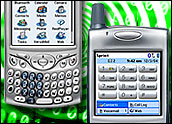
While the Internet has become a daily part of most American lives, Hispanics with lower levels of education and English proficiency are lagging, according to a new report by the Pew Internet & American Life Project.
Seventy-one percent of the non-Hispanic, white adult population in the United States currently goes online, the study found, but only about 56 percent of the adult Latino population — which now makes up 14 percent of the U.S. — uses the Internet. The researchers said 60 percent of the non-Hispanic black adult population regularly surfs the Web.
“Several socio-economic characteristics that are often intertwined, such as low levels of education and limited English ability, largely explain the gap in Internet use between Hispanics and non-Hispanics,” said the report. The paper is based on a series of about 6,000 telephone surveys conducted June through October 2006.
Language Matters
The Pew Hispanic Center collaborated on the project with the Pew Internet & American Life Project.
The researchers determined that only a third of the Latinos who speak only Spanish go online while 78 percent of Latinos who are English-dominant and 76 of bilingual Latinos use the Net.
It also found that a person’s place of birth played a part, since 76 percent of U.S.-born Latinos said they went online compared with 43 percent of those born elsewhere.
“Some of this is related to language, but analysis shows that being born outside of the 50 states is an independent factor that is associated with a decreased likelihood of going online,” wrote the authors.
Pew said 80 percent of second-generation Latinos, “the sons and daughters of immigrants,” go online, even more-so than third-generation Latinos. However, education plays a huge part in this, as the study found 89 percent of Latinos who have a college degree go online, while 70 percent who completed high school and only 31 percent who did not finish high school go online.
Mexicans, described by Pew as “the largest national origin group in the U.S. Latino population” are also the ones least likely to log on, said the report.
Work to Be Done
“The biggest take-away is that the educational divide and income divide is what’s driving the digital divide,” former general manager of AOL Latino David Wellisch told TechNewsWorld. “Essentially, what we need to do is work on two things. One is make a difference on the educational side of things and the income side of things. Two is that this report also shows Latino is still an under-represented segment … so the opportunity is a very significant one for access providers like broadband players.”
A big part of the problem is connectivity. “Just 29 percent of Latino adults have a broadband connection at home, compared with 43 percent of white adults,” said the report. “This is mostly due to the fact that Latino Internet users are less likely than non-Hispanic white Internet users to have any type of Internet connection at home.”
Just a Baseline
The study didn’t delve into the surfing habits of respondents. “This study really just focuses on basic access,” Susannah Fox, a Pew Internet & American Life Project associate director and one of the authors of the study, told TechNewsWorld. “It’s not really a once-they-are-online-what-are-they-doing study which would speak to the prevalence of the English language versus Spanish.”
There is “plenty of content online in Spanish,” she said, adding that “more and more companies are getting into that space.”
Pew “really just wanted to get a baseline, a robust baseline” accounting of the number of Latinos that go online, even if just to use e-mail, Fox explained.
The study did point out that, although they might not be going online in numbers equal to those of other races, Hispanics are heavy users of cell phones.
“Fully 59 percent of Latino adults have a cell phone and 49 percent of Latino cell phone users send and receive text messages on their phone,” according to the report. “Looking at the numbers in a different way, 56 percent of Latino adults go online, 18 percent of Latino adults have a cell phone but do not go online and 26 percent of Latino adults have neither a cell phone nor an Internet connection.”






















































Where are these percentages of latinos coming from? How many participated?. Rrticle doesn’t give references.
Efrain